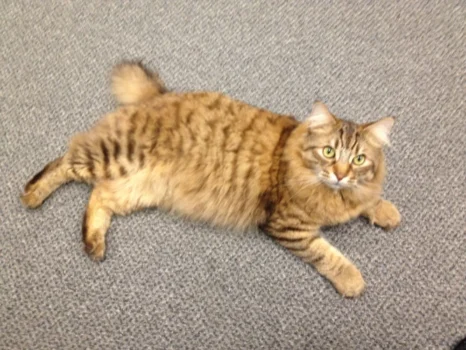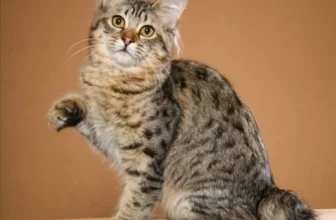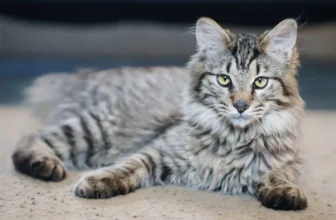Breeding American Bobtails can be a rewarding endeavor for cat lovers, but it is not without its challenges. From understanding the genetics of the breed to caring for newborn kittens, there are many different aspects that breeders must consider in order to be successful. In this article, we will explore some of the most common challenges faced by American Bobtail breeders and provide tips and strategies for overcoming them. Whether you are a seasoned breeder or just starting out, this guide will provide you with valuable information to help you navigate the complexities of breeding American Bobtails. So, grab a cup of coffee and let’s get started!
Genetic Challenges
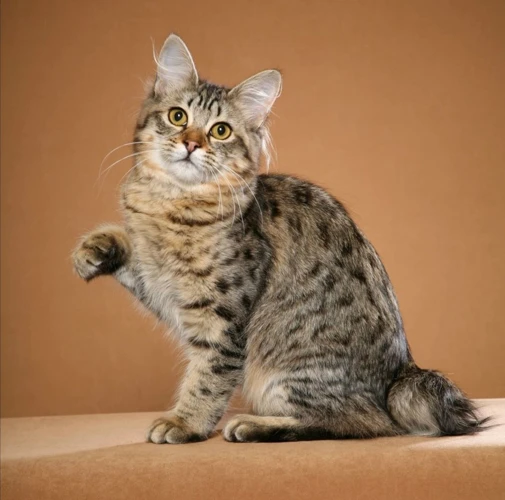
The process of breeding American Bobtails is not without its challenges, particularly when it comes to genetics. Ensuring that the breed remains healthy and diverse with a strong gene pool is crucial for the longevity of the breed. However, there are several key genetic challenges that breeders will face on the way to producing healthy litters of American Bobtail kittens. Let’s dive in and explore these challenges in detail. It’s worth mentioning that understanding the American Bobtail breed’s history and key figures in breeding can help breeders overcome these challenges, so make sure to check out some of our past articles on these subjects.
Understanding the genetics of the breed
Understanding the genetics of the American Bobtail breed is crucial for breeders who aim to produce healthy, high-quality kittens. To breed American Bobtails, it’s necessary to have a basic knowledge of feline genetics. American Bobtails present unique genetic challenges, including dominant and recessive genes that determine important traits like coat length, eye color, and tail length. These genes can significantly affect the breed’s appearance and temperament.
One of the most important genetic features of the American Bobtail breed is the short, bobbed tail. Bobtail traits are usually dominant, meaning that even just one copy of the gene is enough to produce offspring with a bobtail. However, as with any genetic trait, there can be variations in the expression of the gene. Some cats may have a shorter or longer tail than other cats, for example.
Another important genetic feature to consider is the coat length. American Bobtails can have either a short or long coat, depending on their genes. The gene for short hair is dominant, while the gene for long hair is recessive. This means that two cats with a short hair gene will produce offspring with a 75% chance of short hair and a 25% chance of long hair if bred together.
In addition to these unique genetic traits, American Bobtails also have some health concerns that breeders should consider. Some American Bobtails are prone to hip dysplasia, which can be inherited. By being aware of the breed’s genetic predisposition to certain health conditions, breeders can work to eliminate these traits from their breeding program through careful selection of breeding pairs and genetic testing.
Understanding the genetics of the American Bobtail breed is essential for breeders who want to produce healthy, high-quality kittens. It’s important to consider the unique genetic traits of the breed, potential health concerns, and proper testing to ensure the best possible outcome. By doing so, breeders can create a strong breeding program that produces happy, healthy American Bobtail kittens.
Want to learn more about American Bobtail breeding? Check out this brief history of American Bobtail breeding to gain deeper insight into the breed’s background and development.
Diversity within the breed
One challenge that breeders of American Bobtails face is the diversity within the breed. The American Bobtail comes in a variety of colors and patterns, such as tabby and tortoiseshell, as well as with both long and short hair. This diversity can make it difficult for breeders to choose the right breeding pairs to maintain the desired traits in the breed.
Breeding for color and pattern
Some breeders focus on breeding for specific colors and patterns, while others prioritize the Bobtail’s characteristic short tail and wild appearance. However, due to the breed’s genetic diversity, breeding for a specific color or pattern can lead to limited gene pools, which can increase the risk of genetic disorders.
Choosing the right breeding pair
To ensure genetic diversity, breeders will need to carefully select breeding pairs. Keeping the breed’s gene pool varied is critical to avoiding inbreeding and subsequent genetic health problems. Breeders must take into account the bloodlines, characteristics, and temperament of the cats they’re breeding to ensure strong, healthy kittens.
One way to maintain genetic diversity is through planned outcrossing. This involves mating an American Bobtail with a cat from another breed or a different American Bobtail with different bloodlines. A breeder may choose a cat from a line with a different set of genes for specific characteristics, such as coat pattern, to bring variety to the breeding pool. Once the kittens are born, breeders can then evaluate the offspring and decide on which cats to keep for future breeding.
It’s worth noting that breeding for diversity can be a challenging and time-consuming process. It requires patience, knowledge, and skill to create a healthy and genetically varied litter. However, it’s important to avoid breeding cats that are too closely related, as this can result in common genetic disorders that can affect the breed’s health and longevity.
To learn more about the key figures in American Bobtail breeding, please visit our article on key figures in American Bobtail breeding and the evolution of the American Bobtail breed standard. Understanding the genetics of the breed is also vital, and genetic testing can be helpful in identifying potential health problems in kittens. Learn more about genetic testing in American Bobtail breeding by visiting our article on genetic testing in American Bobtail breeding.
Overcoming inbreeding issues
Breeding American Bobtails can pose genetic challenges, particularly when it comes to inbreeding. Inbreeding is the mating of closely related cats, which can increase the prevalence of harmful genetic mutations in the breed. However, it is not uncommon for breeders to turn to inbreeding to create a specific look or trait.
Fortunately, there are several steps breeders can take to overcome inbreeding issues:
- Outcrossing: Outcrossing is the process of introducing unrelated cats from the same breed to the breeding pool. This technique can increase the genetic diversity of the breed and reduce the negative effects of inbreeding.
- Genetic testing: Before breeding, breeders should conduct genetic testing to identify any harmful mutations in their cats. This helps ensure that these mutations are not passed down to the next generation.
- Linebreeding: Linebreeding is the process of breeding related cats with a degree of separation between them. This technique can help maintain desirable traits while minimizing the negative effects of inbreeding.
- Limiting breeding: Limiting breeding can help reduce the occurrence of inbreeding. Breeders can practice responsible breeding by breeding only when necessary and avoiding breeding cats that are closely related.
It’s important to note that inbreeding is not unique to American Bobtails and affects all breeds, including short-tailed breeds such as the Manx and other Bobtail variations. Understanding the basics of inbreeding and genetic diversity is the key to successfully breeding healthy cats.
By implementing these techniques, breeders can significantly reduce the prevalence of harmful mutations and successfully manage inbreeding issues in American Bobtails.
Health Concerns
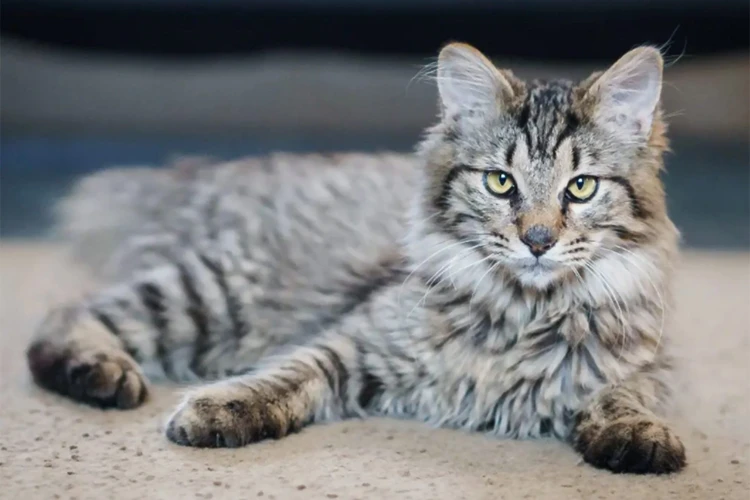
Breeding American Bobtails can be a rewarding experience for breeders, but it also comes with some challenges that need to be overcome. One of the major concerns for breeders is the health of their cats. As with any breed, American Bobtails are prone to certain health issues that require preventive measures and prompt treatment. In this section, we will delve into some of the common health concerns in American Bobtails and provide recommendations for keeping your cats healthy and happy. As you navigate through these challenges, it’s important to remember that the ultimate goal is to produce healthy, well-adjusted kittens.
Common health issues in American Bobtails
American Bobtails are generally healthy cats, but they do have some common health issues that breeders should be aware of. By being proactive and taking measures to prevent these health conditions, breeders can improve the overall health of their cats and produce healthier kittens.
Here is a table that outlines some of the most common health issues in American Bobtails, their symptoms, and the recommended treatments:
| Health Issue | Symptoms | Treatment |
|---|---|---|
| Hypertrophic Cardiomyopathy | Difficulty breathing, lethargy, loss of appetite, sudden death | Medications, lifestyle changes, surgery if necessary |
| Bone and Joint Problems | Limping, stiffness, pain, trouble walking or standing | Pain medication, anti-inflammatory medication, surgery if necessary |
| Urinary Tract Infections | Frequent urination, blood in urine, difficulty urinating, crying out while urinating, licking genital area | Antibiotics, urinary acidifiers, pain medication |
| Eye Problems | Redness, discharge, squinting, tearing, cloudiness | Medication, surgery if necessary |
| Obesity | Weight gain, difficulty breathing, lethargy, decreased mobility | Dietary changes, increased activity, medication if necessary |
It’s important to note that not all American Bobtails will experience these health issues, but breeders should be aware of them and take preventive measures when possible. Regular vet checkups, a healthy and nutritious diet, and exercise can all help prevent some of these common health issues.
If you need more information on American Bobtail cats, you may want to read more about the differences between Bobtail and short-tailed cats or learn about the temperament of American Bobtails.
Preventive measures for breeders
As a breeder of American Bobtails, it’s essential to take preventive measures to ensure the health and well-being of your breeding cats. Here are some steps you can take to minimize health risks:
| Measure | Description |
|---|---|
| Regular Vet Exams | Schedule regular veterinary exams for your breeding cats to catch any health issues early on. |
| Proper Nutrition | Provide high-quality nutrition to your breeding cats to foster optimal health. |
| Manage Stress | Minimize stress through a safe and comfortable environment. Use pheromone sprays or diffusers to provide a calming atmosphere. |
| Parasite Control | Keep breeding cats on a parasite prevention program. Flea, tick, and heartworm prevention are very important to your cats’ health. Regular deworming is also important, especially in kittens. |
| Genetic Testing | Test breeding cats for known genetic issues to reduce the risk of passing on inherited diseases to offspring. |
| Socialization | Socialize kittens early on to prevent behavior problems later on. This should include exposure to different people, animals, and environments. |
By implementing these preventative measures, you can help ensure that your breeding cats are healthy, stress-free, and ready to produce healthy kittens. Remember that breeders are responsible for the health and well-being of their cats and should always prioritize their care.
Care for Kittens and Adult Cats
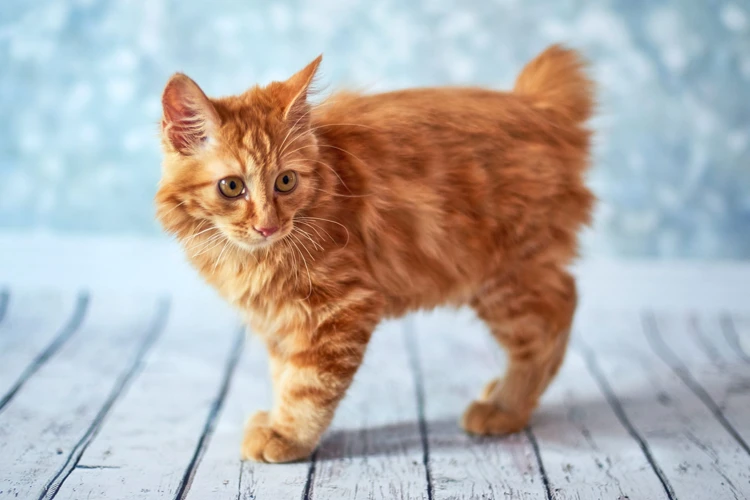
Taking care of American Bobtail cats involves special consideration for their unique characteristics, in both kittens and adult cats. These cats are known for their playful and affectionate personalities and require proper care to thrive. In this section, we will explore important aspects of caring for American Bobtail kittens and adult cats, providing helpful tips for breeders and pet owners alike. From feeding and grooming considerations to special needs for kittens and aging cats, it is essential to stay attentive and provide the best possible care for these beloved pets.
Special considerations for kittens
Raising American Bobtail kittens can be a rewarding and exciting experience for breeders. However, it’s important to keep certain considerations in mind to ensure the health and well-being of the kittens. Some special considerations for kittens include:
- Early socialization: Kittens should be exposed to a variety of sights, sounds, and experiences from a young age to help them develop into well-adjusted adult cats.
- Nutrition: Proper nutrition is especially important for growing kittens. Breeders should work closely with their veterinarian to determine the best diet for their kittens.
- Medical care: Kittens should receive regular veterinary check-ups, vaccinations, and deworming treatments. It’s important to catch any health issues early on to ensure the best possible outcome.
- Safe environment: Kittens are naturally curious and may get into dangerous situations if left unsupervised. Breeders should ensure that their breeding facility is safe and secure, with plenty of toys and enriching activities to keep kittens stimulated.
- Proper training: Breeders should begin litter box training and basic obedience training as early as possible to help kittens develop good habits.
By keeping these special considerations in mind, breeders can raise healthy, happy American Bobtail kittens who are well-prepared for their new homes.
Adult cat care recommendations
As American Bobtails mature and become adult cats, there are certain care recommendations that breeders should keep in mind to ensure their health and well-being. These recommendations include:
| Recommendation | Explanation |
|---|---|
| Regular Veterinary Check-ups | Regular veterinary check-ups are recommended to identify any underlying health issues and to ensure your cat is up-to-date on vaccinations and preventative care. |
| Proper Nutrition | Providing a well-balanced and nutritious diet is essential to maintaining your cat’s health. Consult with your veterinarian to determine the best food options for your adult American Bobtail. |
| Regular Exercise | Regular exercise is important for keeping your adult American Bobtail at a healthy weight and to help prevent obesity-related health issues. |
| Mental Stimulation | Providing mental stimulation through interactive toys and playtime can help prevent behavior issues in adult American Bobtails such as aggression or destructive tendencies. |
| Invest in Quality Litter Boxes | Investing in quality litter boxes with easy access and proper sizing for your adult American Bobtail can help prevent litter box issues. |
| Provide a Safe Environment | Ensuring your home environment is safe for your adult American Bobtail is crucial. Keep hazardous substances out of reach, provide ample hiding spots and climbing opportunities, and supervise outdoor access if applicable. |
By following these recommendations, breeders can help ensure the health and happiness of their adult American Bobtails. Regular veterinary check-ups, proper nutrition, exercise, mental stimulation, quality litter boxes, and a safe environment are all key components of adult cat care.
Preparing for Breeding
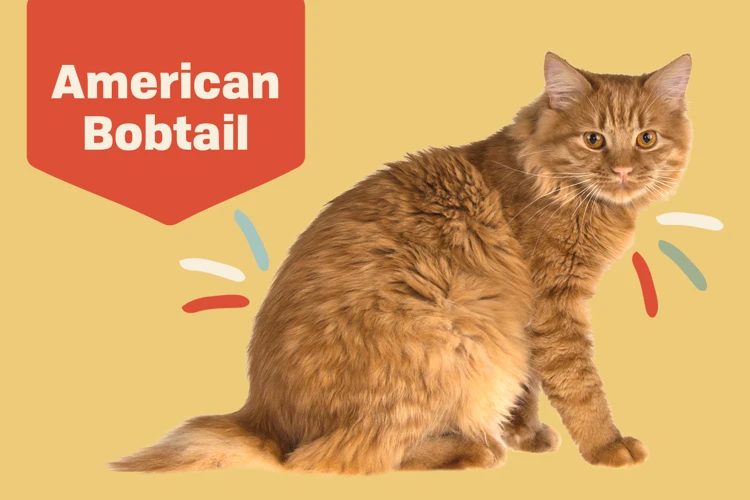
As breeding American Bobtails requires a meticulous approach, preparing for the breeding process is a crucial step for success. Before starting, breeders must ensure they have chosen the right breeding pair and conducted necessary pre-breeding health checks. Additionally, preparing the breeding environment can help improve the chances of a successful and healthy litter. In this section, we will discuss the various factors that breeders should consider when preparing for breeding. Let’s dive into it.
Choosing the right breeding pair
One of the most crucial steps in breeding American Bobtails is selecting the right breeding pair. This decision can greatly impact the health and genetic diversity of the breed. Here are some important factors to consider when choosing the right pair:
- Genetic diversity: It is crucial to ensure that the breeding pair comes from genetically diverse lineages. Inbreeding can lead to genetic defects and health issues in future generations.
- Health records: The health records of both the male and female cat should be reviewed before breeding to ensure they are free from any genetic and health issues that could be passed on to the offspring. Health checks including scans, bloodwork or DNA tests might be helpful.
- Physical characteristics: The physical characteristics of both the male and female cat should align with the breed standards. For example, the American Bobtail should have a short, stubby tail and a muscular build.
- Temperament: The temperament of both cats should also be taken into consideration, as they can pass on personality traits to their offspring. Choosing cats with an even-temperament who are friendly and sociable, could help produce kittens with similar qualities.
- Breeding experience: Choosing cats who have prior breeding experience is also a plus. Experienced cats will generally produce healthier litters, and can help with the birthing process.
It’s essential to take your time when selecting a breeding pair, as making the wrong choice can lead to long-lasting issues. Consulting with an experienced breeder or veterinarian can also be helpful in making the best decision for the health and future of the American Bobtail breed.
Pre-breeding health checks
When it comes to breeding American Bobtails, pre-breeding health checks are crucial for the well-being of both the parent cats and their potential offspring. Before selecting a breeding pair, it’s essential to ensure that both cats are healthy and free of genetic diseases. Let’s take a closer look at the key health checks that breeders should carry out before breeding their American Bobtails.
| Health Check | Description |
|---|---|
| Genetic Testing | Both parent cats should undergo genetic testing to check for any potential genetic issues that could be passed onto their offspring. Common tests include those for hypertrophic cardiomyopathy, polycystic kidney disease, and spinal muscular atrophy. |
| Feline Leukemia Virus (FeLV) | FeLV is a serious and contagious virus that can be passed from one cat to another. It’s important to test both parent cats for the virus to prevent potential infection. |
| Feline Immunodeficiency Virus (FIV) | Similar to FeLV, FIV is a virus that can be passed from one cat to another. If one parent cat is positive for FIV, breeding should not occur as the virus can be transmitted to offspring. |
| Fecal Exam | A fecal exam checks for the presence of parasites such as worms, which can be harmful to both parent cats and their kittens. If parasites are detected, treatment should be provided before breeding. |
| Blood Work | Blood work can provide valuable information about a cat’s overall health and any potential underlying health conditions. It’s recommended that both parent cats undergo a complete blood count and serum biochemistry panel. |
| Physical Exam | A comprehensive physical exam should be performed on both parent cats to check for any obvious health issues such as dental problems, ear infections, or skin conditions. |
By ensuring that both parent cats are in good health before breeding, breeders can increase the chances of producing healthy kittens free of genetic diseases and other health issues. It’s important to note that even with these pre-breeding health checks, there is no guarantee that any resulting kittens will be completely free of health concerns, but it does minimize the risk.
Preparing the breeding environment
To ensure a successful breeding, it’s important to carefully prepare the breeding environment. This includes creating a comfortable and safe space for the breeding pair, as well as ensuring they have access to all necessary resources. Here are some key steps to take when preparing your breeding environment:
| Step | Description |
|---|---|
| 1. Clean and sanitize the breeding area | Before introducing the breeding pair, thoroughly clean and sanitize the breeding area to ensure there are no harmful bacteria or parasites present. Use a pet-safe disinfectant and allow plenty of time for the area to dry before introducing the cats. |
| 2. Create a comfortable space | The breeding area should be spacious enough to accommodate both the male and female cat comfortably. Provide plenty of bedding for them to sleep on, as well as toys and a scratching post to keep them entertained. |
| 3. Ensure access to food and water | Both the male and female cat will need access to plenty of fresh water and high-quality food. Provide separate food and water dishes for each cat to prevent any conflicts. |
| 4. Monitor the environment | Regularly monitor the breeding environment to ensure that all factors are in place. Check the humidity and temperature levels and make adjustments as necessary. Consider using a pet-safe pheromone diffuser to help calm the cats during the breeding process. |
| 5. Prepare for potential issues | Even with the best preparation, there may be unforeseen issues during the breeding process. Keep a first aid kit on hand in case of minor injuries, and know where to seek emergency veterinary care if needed. |
By following these steps, you can help ensure that your breeding pair is comfortable, safe, and has everything they need for a successful breeding.
Birthing and Caring for Newborns
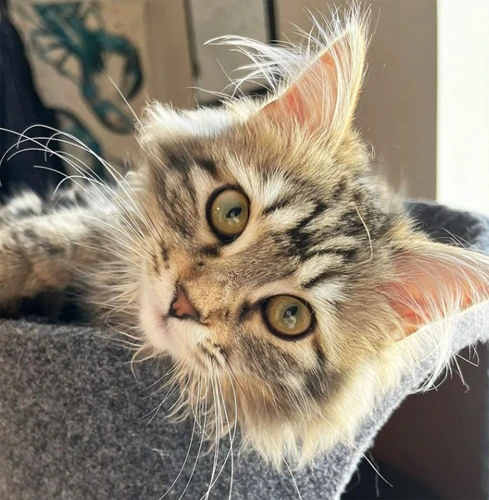
Bringing new life into the world can be an incredibly rewarding experience. However, breeding American Bobtails requires careful planning and attention to detail, especially when it comes to birthing and caring for newborn kittens. From recognizing signs of impending birth to assisting with difficult deliveries, breeders must be prepared to handle a range of situations. Additionally, caring for newborn kittens requires a delicate touch, as these little ones are completely dependent on their mother and need round-the-clock care. In this section, we’ll explore the challenges of birthing and caring for American Bobtail kittens and provide tips for ensuring their health and wellbeing.
Signs of impending birth
As a breeder of American Bobtails, it’s important to know the signs that indicate your cat is about to give birth. These signals may differ from cat to cat, but there are a few common things to look out for. Here are some of the most notable indications that your cat is about to give birth:
- Decline in Body Temperature: A drop of 1-2 degrees in the mom cat’s temperature is an indicator that labor is starting soon.
- Restlessness: The pregnant cat might become nervous and anxious. She will repeatedly try out different places for delivery and will not settle down.
- Increased Affection: Affectionate behavior or increased vocalizations are indicators that the delivery process will soon begin.
- Mucus Discharge: If the pregnant cat has a clear or bloody discharge from the vagina, she will probably deliver soon.
- Nesting Behavior and Loss of Appetite: The pregnant cat will start crawling into small spaces in order to prepare a safe, secluded spot for delivery. Additionally, the cat may lose their appetite entirely or refuse to eat as their body is preparing for birth.
It’s essential to be familiar with the signs that indicate when your American Bobtail is about to give birth so that you can be there to help and support them during the birthing process. Additionally, you can be ready to notify your veterinarian if there are any complications during delivery. Remember that being an informed and prepared breeder is crucial for your kittens’ health and survival.
Assisting with difficult births
Assisting with difficult births is a crucial part of breeding American Bobtails. While most deliveries go smoothly, kitten births can sometimes present challenges that require immediate action. Here are some steps breeders can take to aid a difficult birth:
- Monitor the birthing process: It is essential to observe the queen during labor to detect any irregularities. If the queen has already delivered some kittens but has stopped straining, or if she appears to be in discomfort for an extended period, it could indicate the presence of a stuck kitten or a problem with the placenta.
- Prepare for an emergency: Have an emergency kit on hand, which should include scissors, thread, lubricant, a bulb syringe, and a heating pad. Breeders can also consult their veterinarian in advance to determine if there are any other supplies they should have on hand.
- Assess the situation: If the kitten is not coming out, it may have to be manually extracted. Breeders should be familiar with the correct method of extracting a stuck kitten and take care to avoid injuring the kitten or queen.
- Seek veterinary assistance: If a kitten is stuck or there is excessive bleeding, breeders should quickly seek veterinary assistance. Breeding is a delicate process, and there is no shame in asking for help when needed.
- Provide post-birth care: After the delivery, the kittens and the queen should be in a warm, dry, and clean environment. Breeders should encourage the queen to feed and care for her litter, but if necessary, they should be prepared to bottle-feed the kittens.
Assisting with difficult births is part of the responsibility that comes with breeding American Bobtails, and with proper preparation and vigilance, breeders can overcome these challenges and ensure a safe and successful delivery for their queen and her litter.
Caring for newborn kittens
One of the most crucial stages in breeding American Bobtails is caring for newborn kittens. Newborn kittens are extremely fragile and require constant attention and care. Breeder should make sure to create a warm and cozy environment for the kittens, as well as provide them with adequate nutrition and hydration.
Nutrition
Newborn kittens are completely dependent on their mother’s milk for the first few weeks of life. It is important to ensure that the mother cat is producing enough milk and that the kittens are nursing properly. In some cases, it may be necessary to supplement with a high-quality kitten formula. The frequency of feedings will depend on the age and size of the kittens, but generally, they will need to be fed every 2-3 hours.
Hydration
Keeping the kittens hydrated is equally important. Breeder should ensure that they have access to fresh, clean water at all times. In some cases, particularly with very young kittens, it may be necessary to provide hydration through a syringe or eye dropper.
Warmth
Newborn kittens are not able to regulate their own body temperature and can easily become too cold. Breeder should provide a warm and cozy environment for the kittens, ideally with a temperature of around 80-85 degrees Fahrenheit. This can be achieved through the use of heating pads, hot water bottles, or even a heat lamp (taking care to avoid any potential hazards).
Stimulation and Socialization
In addition to meeting their basic needs for nutrition, hydration, and warmth, breeder should also provide ample stimulation and socialization for the kittens. This can include handling them regularly, introducing them to new sights and sounds, and encouraging play and exploration. These experiences will help the kittens develop properly both physically and socially.
Caring for newborn kittens is a challenging but rewarding aspect of breeding American Bobtails. By providing adequate nutrition, hydration, warmth, and stimulation, breeders can ensure that their kittens have the best possible start in life.
Marketing and Selling Kittens
As a breeder, your ultimate goal is to produce healthy and happy American Bobtail kittens and find them loving forever homes. However, marketing and selling your kittens can be a challenging and complex process. It requires careful planning, research, and strategy to ensure that you find the right buyers who will provide a safe and loving environment for your kittens. In this section, we’ll explore some effective marketing and selling techniques that will make the process smoother and less stressful for you and your furry family members. So, let’s dive in and examine some of the key considerations for pricing, advertising, and screening potential buyers.
Pricing considerations
When it comes to pricing American Bobtail kittens, breeders must consider several factors to determine a fair and reasonable price. The cost of breeding, health checks, and care for the kittens must all be factored in, along with market demand and competition. The following table outlines some of the pricing considerations that breeders should keep in mind:
| Consideration | Description |
|---|---|
| Genetic quality | The genetic quality of the breeding pair will play a significant role in the price of the kittens. Show-quality cats with desirable traits will fetch a higher price. |
| Health and vaccinations | Kittens that have been vaccinated and have a clean bill of health from a veterinarian will typically be priced higher than those without these safeguards. |
| Breeder reputation | Breeders with an established reputation or who have won awards for their breeding will be able to command higher prices for their kittens. |
| Geographic location | The location of the breeder can also impact the price of their kittens. Breeders in metropolitan areas and regions with high demand may be able to charge more for their kittens than those in remote or less populated areas. |
| Gender | Gender can also play a role in pricing, with females often commanding a higher price due to their ability to breed. |
| Kitten age | The age of the kitten can affect pricing as well, with younger kittens usually priced higher than those closer to adulthood. |
It is important to note that while price is certainly a factor for potential buyers, it should not be the only consideration. Breeders should also be upfront about any potential health issues and provide information on the kitten’s pedigree and previous medical history. By being transparent and thorough in their communications with potential buyers, breeders can establish trust and build a loyal customer base.
Advertising and networking strategies
When it comes to advertising and networking strategies for selling American Bobtail kittens, there are several effective methods breeders can use to reach potential buyers. Here are a few ideas to consider:
- Utilize social media: Social media platforms such as Facebook and Instagram are great places to showcase your American Bobtail kittens. Share pictures and videos of your kittens with a description of their personality traits and any unique features you’ve noticed. You can also create a dedicated page for your cattery to build a following and keep interested parties updated on kitten availability.
- Attend cat shows: Cat shows are a great place to connect with other breeders and potential buyers. Attend local and regional shows with a few of your best American Bobtail cats and kittens. This will give you the opportunity to meet other breeders and connect with people who are interested in the breed.
- Partner with other breeders: Sometimes partnering with other breeders who specialize in different breeds can be a great way to reach a wider audience. Reach out to breeders in your area or online who work with complementary breeds and see if they’d be interested in collaborating with you.
- Reach out to “cat influencers”: There are many popular social media accounts and blogs devoted to cats and cat-related content. Identify influential accounts and bloggers in the cat community and reach out to them to see if they’d be willing to promote your kittens to their followers.
- Use online classifieds: Websites like Craigslist and Pets4Homes can be a great way to reach local buyers. Make sure you use high-quality pictures and a compelling description to make your kittens stand out from other ads.
- Advertise on breed-specific websites: There are several websites dedicated to specific cat breeds where breeders can advertise their kittens. Look for websites that specialize in American Bobtails and consider placing an ad.
Remember that while advertising and networking can help you reach potential buyers, it’s important to be selective about who adopts your kittens. Screen potential buyers to ensure they will provide a safe and loving home for your American Bobtail kittens.By utilizing these networking and advertising strategies, you will be able to reach a wide audience and find the perfect homes for your American Bobtail kittens.
Screening potential buyers
One important aspect of breeding American Bobtails is ensuring that each kitten goes to a loving and responsible home. This can be achieved by carefully screening potential buyers before the sale is finalized. Here are some factors to consider when evaluating potential buyers:
| Factor | Considerations |
|---|---|
| Living Situation | Ask about the buyer’s living arrangement and whether they own or rent their home. American Bobtails are indoor cats, so it is important to make sure that the buyer has a suitable indoor environment for the kitten. |
| Experience with Cats | It is important to know if the potential buyer has experience with cats in general and with the American Bobtail breed specifically. You can ask about their previous cat ownership and about their knowledge of the breed. |
| Family Situation | Find out if the buyer has children or other pets in the home. It is important to ensure that the kitten will be going to a home that is safe for them and that they will get along well with any existing family members or pets. |
| Financial Stability | Selling an American Bobtail kitten can be expensive, so it is important to make sure that the buyer has the financial stability to provide proper care for the kitten. |
| Intentions for the Kitten | Ask the potential buyer about their intentions for the kitten. Will it be a family pet or a breeding cat? Clarifying their intentions can help ensure that the kitten goes to a home that aligns with your own breeding goals. |
By taking the time to screen potential buyers, breeders can help ensure that their American Bobtail kittens go to safe and loving homes where they will receive the care and attention they need to thrive.
Conclusion
As a breeder, it is important to recognize the challenges that come with breeding American Bobtails. From understanding the genetics of the breed to addressing health concerns, caring for kittens and adult cats, preparing for breeding, and birthing and caring for newborns, there are numerous factors that require careful consideration and attention.
One of the key genetic challenges that breeders face is understanding the genetics of the breed. It is important to research and study the genetic history of the breed to ensure that you are making informed breeding decisions. Furthermore, the diversity within the breed itself can also be a challenge, as it can be difficult to find unrelated breeding pairs. Overcoming these inbreeding issues is essential for maintaining the health and genetic diversity of the breed.
In addition to genetic challenges, there are also several health concerns that breeders must be aware of. Common health issues in American Bobtails include hip dysplasia, heart disease, and dental problems. As a breeder, it is important to take preventive measures to ensure the health of your breeding pairs and their offspring.
Caring for kittens and adult cats also requires careful consideration. Special considerations must be made for the care of kittens, including appropriate nutrition and socialization. Adult cat care recommendations include proper hygiene, regular exercise, and preventative medical care.
When preparing for breeding, choosing the right breeding pair is crucial. Pre-breeding health checks should be conducted to ensure that both breeding partners are healthy and well-suited for breeding. Additionally, the breeding environment should be properly prepared to ensure that the mother and her kittens are comfortable and safe.
Birthing and caring for newborn kittens can also present challenges. Breeders must be aware of the signs of impending birth and prepared to assist with difficult births if necessary. Caring for newborn kittens includes monitoring their health and ensuring proper nutrition and hygiene.
Finally, marketing and selling kittens requires careful consideration of pricing, advertising and networking strategies, and screening potential buyers to ensure that they are responsible and capable of providing a loving home for the kitten.
In conclusion, breeding American Bobtails can be a challenging but rewarding endeavor. By addressing genetic challenges, health concerns, and providing optimal care for your breeding pairs and their offspring, you can help to maintain the health and quality of the breed while also finding loving homes for your kittens.
Frequently Asked Questions
What is the lifespan of American Bobtails?
American Bobtails have a lifespan of 13-15 years on average.
What are the most common health issues in American Bobtails?
The most common health issues in American Bobtails are hip dysplasia, hypertrophic cardiomyopathy, and spinal issues.
What is the importance of genetic testing in breeding American Bobtails?
Genetic testing is important in breeding American Bobtails to reduce the incidence of genetic diseases and ensure overall breed health.
How can breeders overcome inbreeding issues in American Bobtails?
Breeders can overcome inbreeding issues in American Bobtails by outcrossing with cats from other lines and carefully selecting breeding pairs.
What special care do American Bobtail kittens require?
American Bobtail kittens require frequent monitoring and socialization to ensure healthy development and proper bonding with humans.
What types of health checks should be performed before breeding American Bobtails?
Before breeding American Bobtails, breeders should perform genetic testing, hip and heart evaluations, and obtain a clean bill of health from a veterinarian.
What should breeders consider when choosing a breeding pair of American Bobtails?
Breeders should consider the health and genetic background of both cats, as well as their temperament and conformation to breed standards.
How can breeders prepare the breeding environment for American Bobtails?
Breeders should ensure a clean and comfortable living space for breeding cats, with plenty of room to move and play. They should also provide proper nutrition and veterinary care.
What are some pricing considerations for selling American Bobtail kittens?
Pricing considerations for selling American Bobtail kittens may include breed reputation, pedigree, and the cost of veterinary care and vaccinations.
How can potential buyers be screened to ensure a good home for American Bobtail kittens?
Potential buyers can be screened by asking for references, conducting home visits, and asking questions about their experience with cats and their ability to provide proper care and attention.

